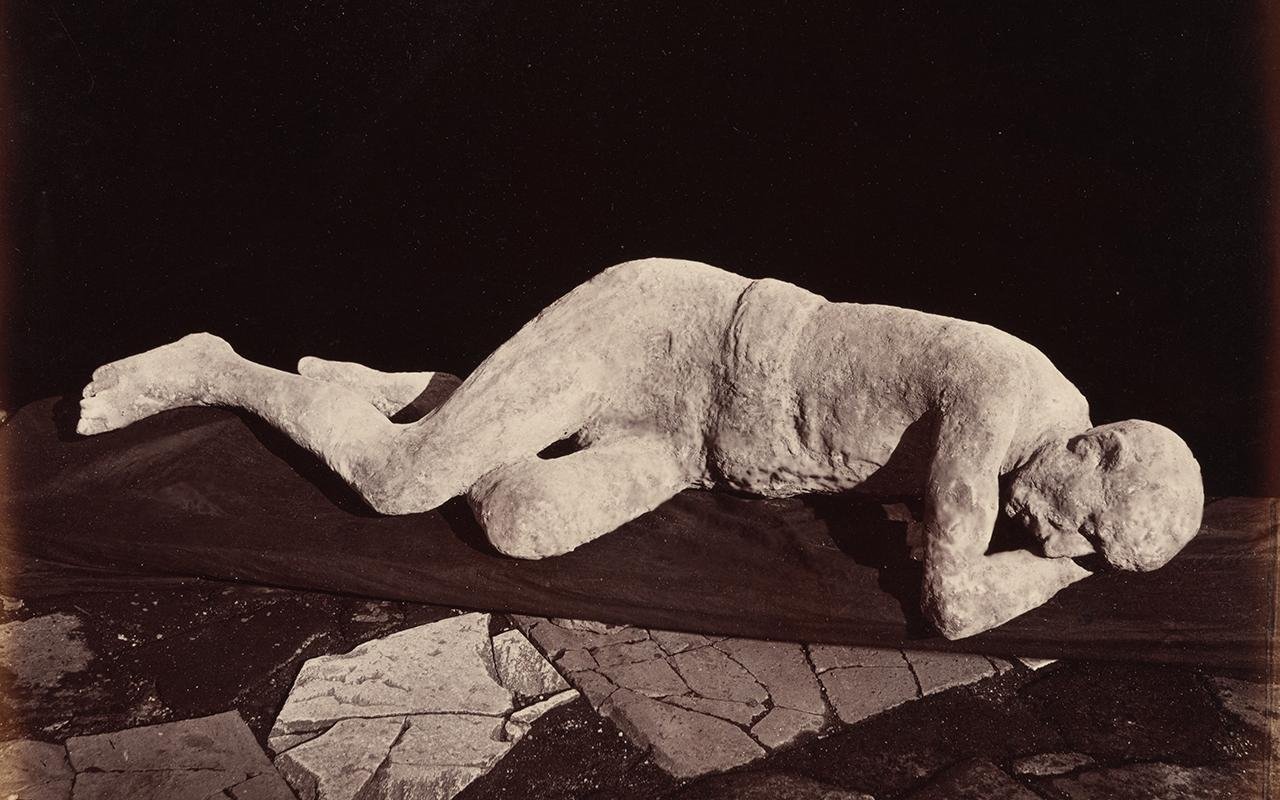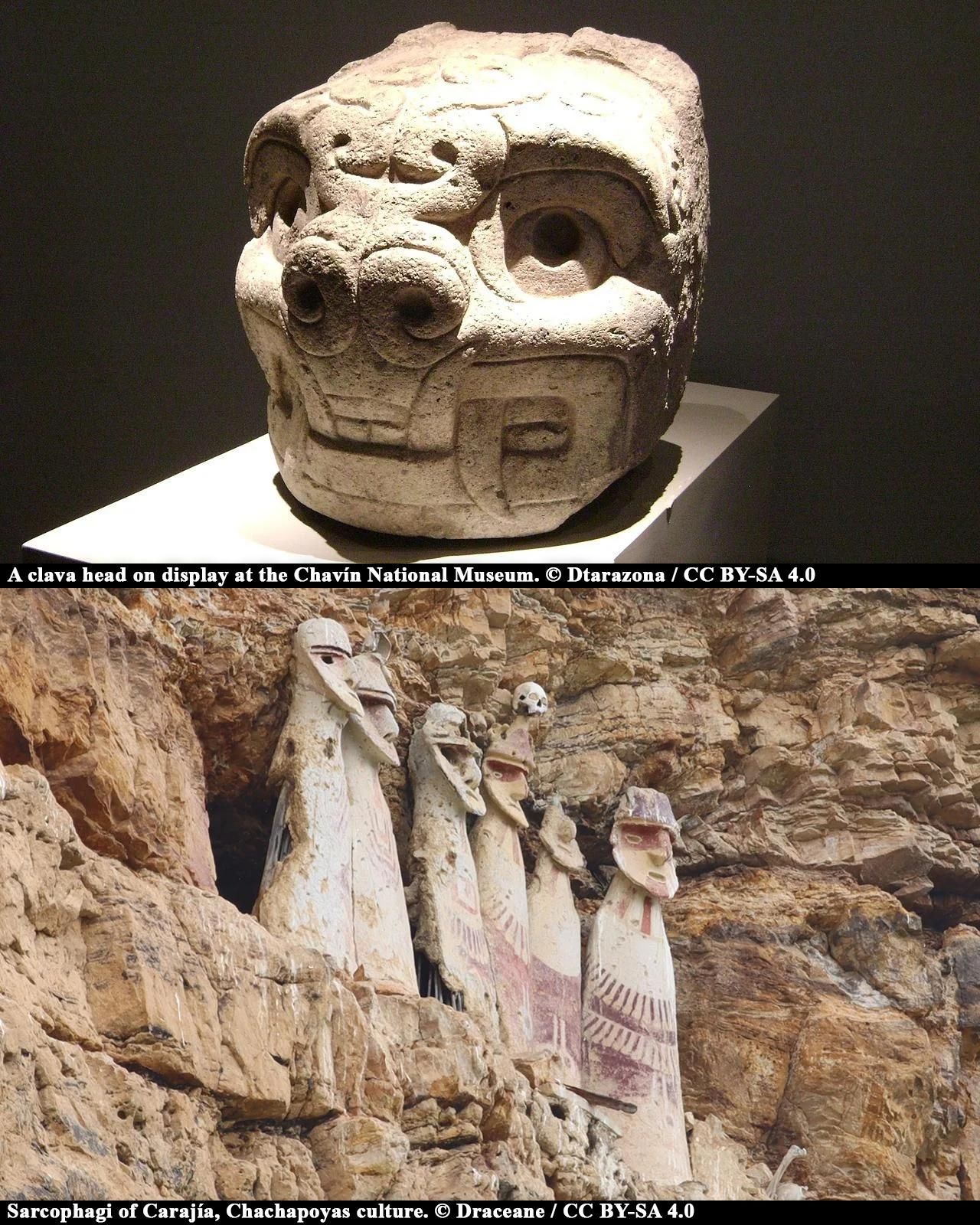High in the cloud forests of northern Peru, archaeologists have uncovered a discovery that reshapes our understanding of one of South America’s most enigmatic ancient cultures. At the Ollape Archaeological Site in the district of La Jalca, researchers documented more than 200 pre-Hispanic structures along with two rare ceremonial artifacts known as clava heads.
This breakthrough was achieved by a collaborative team from the Kuelap Archaeology and Anthropology Research Institute (INAAK) and the Xalca Grande Archaeological Project, with technological support from the Geomatics Research Laboratory of the National University Toribio Rodríguez de Mendoza (UNTRM). Published in mid-2025, the findings offer new insight into the Chachapoyas civilization, also called the “Warriors of the Clouds,” a culture that thrived between 200 CE and 1500 CE before being incorporated into the Inca Empire.

The discoveries go beyond confirming known details about Chachapoyas society. They reveal the scale of settlement networks, the complexity of ceremonial life, and the persistence of ancient cultural traditions that stretched back to earlier Andean civilizations.
Mapping the Hidden City
For decades, the dense Amazonian cloud forest concealed Ollape’s true size. Traditional excavation was limited due to the steep terrain and vegetation cover. However, researchers employed LiDAR (Light Detection and Ranging) and drone-based aerial surveys to penetrate the canopy.
This advanced mapping revealed a sprawling settlement system built along the mountainsides. Circular stone dwellings, ceremonial plazas, defensive walls, and decorative friezes appeared in the scans. Archaeologists identified a zigzag design carved into one structure, an artistic element not previously documented at Chachapoyas sites.
The use of LiDAR represents a broader trend in South American archaeology, where cutting-edge technology is transforming exploration in remote areas. Similar methods have revealed vast ancient cities in the Amazon basin, strengthening the idea that pre-Columbian societies were far more urbanized and organized than once believed.
The Ceremonial Clava Heads

Among the most intriguing discoveries were two ceremonial club heads, or clava heads, found embedded within the remains of a perimeter wall. Unlike ordinary tools or weapons, these stone artifacts were intentionally placed, suggesting symbolic or ritualistic significance.
Their style echoes that of the Chavín culture (circa 900–200 BCE), one of the earliest major civilizations in Peru. This stylistic similarity suggests either long-lasting artistic traditions preserved for centuries or direct cultural exchange between the Chachapoyas and distant Andean societies.
The presence of clava heads at Ollape may indicate the site’s role as a ceremonial hub. They may have symbolized authority, fertility, or cosmic order—interpretations consistent with other ceremonial objects in the Andes. While their precise meaning remains unknown, their deliberate placement within a wall highlights the importance of ritual symbolism in Chachapoyas society.
The Chachapoyas Civilization: “Warriors of the Clouds”
The Chachapoyas people lived in the Andes’ eastern slopes, occupying regions of today’s Amazonas region of Peru. Their culture flourished in the cloud forests at altitudes between 2,000 and 3,000 meters, where they built stone settlements, fortresses, and elaborate cliffside burials.
They are perhaps best known for Kuelap, a massive fortress complex often called the “Machu Picchu of the north,” and for unique sarcophagi at Carajía and tombs at Laguna de las Momias. However, most of what was known about them came from Inca and Spanish chroniclers, who described them as skilled warriors and builders.
The discovery at Ollape provides direct archaeological evidence that complements those records. Unlike Kuelap, which functioned primarily as a fortress and ceremonial center, Ollape appears to have been part of a larger network of settlements with both residential and ritual purposes.
Architecture and Settlement Patterns
The more than 200 structures at Ollape demonstrate a high degree of planning. Most are circular dwellings, a hallmark of Chachapoyas architecture. Their interconnected arrangement suggests family or community clusters, while larger open spaces may have functioned as gathering places.
Archaeologists also identified ritual spaces, distinguished by decorated walls and their central positions within the settlement. The zigzag frieze is particularly notable, as geometric motifs often carried symbolic meaning in Andean cultures, possibly representing water, mountains, or cosmological principles.
The scale of the site suggests a population larger and more complex than previously assumed for this region. This aligns with growing evidence that the Chachapoyas were not just isolated mountain dwellers but part of a sophisticated society with expansive territorial control.
Cultural Connections Across the Andes
The discovery of clava heads resembling Chavín art raises the possibility of cultural continuity across centuries. The Chavín civilization, centered in the central highlands of Peru, was one of the earliest to develop a shared religious and artistic style. The persistence of these motifs in Chachapoyas contexts suggests that Andean peoples retained or revived older traditions, embedding them in local practices.
This reflects a broader pattern seen throughout the Andes, where cultures often blended local innovation with inherited traditions, creating a tapestry of interconnected societies. Ollape thus becomes a key site for understanding how the Chachapoyas positioned themselves within Andean cultural history.
Significance for Andean Archaeology
The Ollape discovery contributes to several important debates in South American archaeology:
-
Urbanization in the cloud forests: The scale of Ollape challenges assumptions that high-altitude forest societies were small and dispersed. Instead, they were capable of building extensive settlements.
-
Ritual diversity: The ceremonial artifacts and decorated structures indicate a variety of spiritual practices, distinct from those known at Kuelap or other sites.
-
Cultural resilience: The presence of pre-Inca traditions alongside local innovations shows how Chachapoyas society maintained its identity even in the face of external influences.
Future Research Directions
Archaeologists plan to continue excavations at Ollape to:
-
Map the full extent of the settlement using LiDAR and ground surveys.
-
Investigate the ceremonial complex to determine its role in regional religious practices.
-
Analyze soil and botanical remains to reconstruct diet and agriculture.
-
Compare artifacts with those from neighboring regions to clarify cultural exchanges.
These efforts may eventually provide a clearer picture of how the Chachapoyas lived, worshiped, and interacted with surrounding societies.
Broader Implications
The discovery at Ollape underscores the importance of Peru’s Amazonas region in world archaeology. For decades, the spotlight has been on iconic sites like Machu Picchu or Nasca, but Chachapoyas heritage is increasingly recognized as equally vital for understanding the diversity of Andean civilizations.
Moreover, the use of LiDAR technology in Ollape highlights how modern science can transform our knowledge of ancient worlds. What once required years of laborious clearing and excavation can now be revealed through precise mapping, opening new possibilities for discoveries in other forested regions of South America.
Conclusion
The unearthing of more than 200 structures and two ceremonial clava heads at Ollape represents a turning point in the study of the Chachapoyas. It confirms that this “lost city” was not a small settlement but a complex urban and ceremonial center, enriched by cultural connections stretching across centuries of Andean history.
For the Chachapoyas, who built their lives in the misty highlands of Peru, Ollape was likely a place of both community and ritual significance. For modern researchers, it is a window into the ingenuity of ancient societies that thrived in challenging environments.
As excavations continue, Ollape promises to reshape our understanding of the Chachapoyas and their place within the wider Andean world—reminding us that history is still waiting to be uncovered beneath the forests of the “Warriors of the Clouds.”
